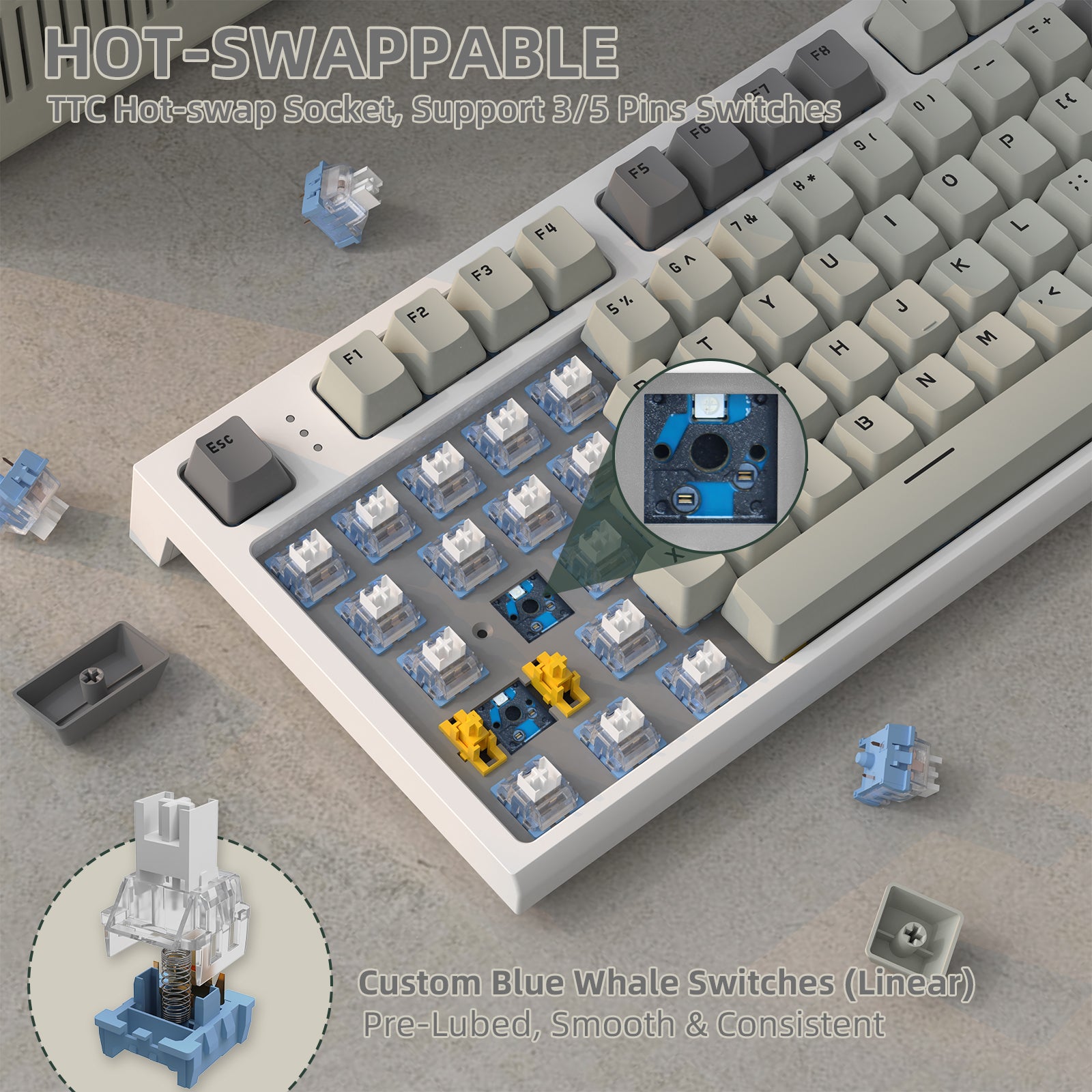Unlock Your Ultimate Typing Experience: The Secret World of Mechanical Keyboards Awaits!
Mechanical keyboards have surged in popularity, becoming the go-to choice for both avid typists and gamers alike. Unlike traditional membrane keyboards, mechanical keyboards utilize individual mechanical switches for each key, offering superior tactile feedback and response. This unique construction not only enhances the typing experience but also promises unmatched durability, often lasting years longer than their non-mechanical counterparts. Additionally, mechanical keyboards come with a plethora of customization options, allowing users to personalize their setup to suit their preferences. Whether you're looking for a satisfying click when you type, a smooth stroke for gaming, or the ability to customize your keycaps, mechanical keyboards cater to all needs. In this article, we’ll explore the essential factors to consider when purchasing a mechanical keyboard, helping you make an informed decision for your next typing companion.

Understanding Mechanical Keyboards
A mechanical keyboard is defined by its use of mechanical switches beneath each key. Unlike traditional keyboards that rely on rubber domes, mechanical switches consist of a housing, spring, and a stem that moves up and down when pressed. This design provides a more consistent key press and greater responsiveness. There are primarily three types of mechanical switches: tactile, linear, and clicky. Tactile switches provide a noticeable bump when the key is actuated, making them great for typing. Linear switches, on the other hand, offer a smooth keystroke without any tactile feedback, which many gamers prefer for rapid key presses. Clicky switches deliver both tactile feedback and an audible click sound, which some users find satisfying but others may consider noisy. Choosing the right switch type is crucial as it directly impacts your typing experience, so it’s essential to test different switches to see what feels most comfortable for you.
Key Factors to Consider When Buying a Mechanical Keyboard
Before diving into a purchase, there are several key factors to consider to ensure you select the perfect mechanical keyboard for your needs. Firstly, the type of switch is paramount; each switch offers a different feel and sound. Secondly, the size of the keyboard matters. Full-size keyboards include a number pad, while tenkeyless models omit it for a more compact design, making them easier to transport. Compact keyboards are even smaller and can be great for minimal desk setups. Keycap material is another consideration; while plastic is standard, higher-end keyboards may feature PBT keycaps, which are more durable. Additionally, build quality plays a significant role; a solidly built keyboard will stand the test of time and withstand heavy use. Don't forget to check for additional features like backlighting, programmable keys, and even dedicated media controls, as these can enhance your overall experience.
Comparing Options: Choosing the Right Mechanical Keyboard for You
When evaluating different mechanical keyboards, it's crucial to align your choice with your personal needs and preferences. Consider your typical typing style; are you a heavy typist, or do you primarily game? Each use case can influence the switch type you might prefer. For instance, gamers often seek faster response times, which may lead them to linear switches, while writers or programmers could appreciate the feedback from tactile switches. Additionally, set a budget that you’re comfortable with, as mechanical keyboards can vary widely in price. Testing keyboards in-store can be invaluable; feel the switches, listen to their sounds, and see how they fit into your workflow. Read reviews online to gain insights into the experience of other users. This well-rounded approach will help you find a keyboard that not only meets your needs but enhances your typing experience.
Selecting Your Perfect Mechanical Keyboard
In summary, mechanical keyboards present a world of advantages over traditional keyboards, offering enhanced typing experiences through their unique switch designs and customization options. As we've discussed, understanding the different types of switches, considering essential factors such as size and build quality, and evaluating your personal needs will guide you towards selecting the right keyboard. Remember, the perfect mechanical keyboard is out there waiting for you—take the time to explore, test, and discover what suits you best. Your ultimate typing experience is just a keyboard away!



